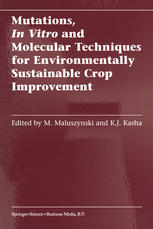

Most ebook files are in PDF format, so you can easily read them using various software such as Foxit Reader or directly on the Google Chrome browser.
Some ebook files are released by publishers in other formats such as .awz, .mobi, .epub, .fb2, etc. You may need to install specific software to read these formats on mobile/PC, such as Calibre.
Please read the tutorial at this link: https://ebookbell.com/faq
We offer FREE conversion to the popular formats you request; however, this may take some time. Therefore, right after payment, please email us, and we will try to provide the service as quickly as possible.
For some exceptional file formats or broken links (if any), please refrain from opening any disputes. Instead, email us first, and we will try to assist within a maximum of 6 hours.
EbookBell Team

5.0
110 reviewsDuring the last thirty years, most increases in agricultural production were achieved through high input agrieulture in areas with fertile soils and sufficient water. Intensive methods of production with high levels of nitrogen fertilizer and pesticides were often accompanied by environmental degradation and in some instances by pollution of the food supply. However, rapid population growth has also led to increasing use of marginal lands, where adverse soil and climatic eonditions are serious constraints to food production. These areas are even more sensitive to ecological destabilization. Environmentally sound systems of food production and land use are essential for meeting the food security needs of developing countries. To do this, greater genetic variability is needed within the best crop genotypes available for the areas in need coupled with better management praetices and crop rotations. These requirements can only be realized if suitable crop varieties are bred. These should be varieties with a much shorter growing period, suitable for rotation, increased tolerance or resistance to diseases and pests as weil as to drought and salinity and other adverse soil and climatic conditions.